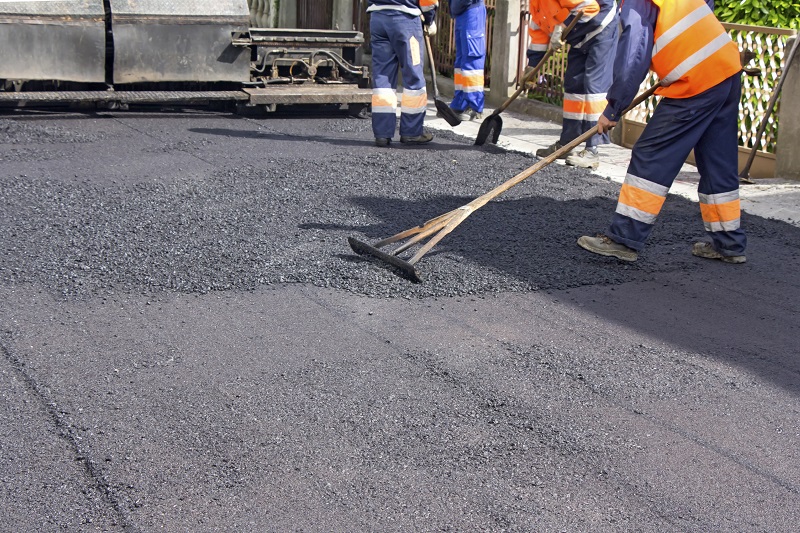Optimize Room Performance with Hot Mix Asphalt Angled Parking Lot Solutions
Optimize Room Performance with Hot Mix Asphalt Angled Parking Lot Solutions
Blog Article
Unlocking the Secrets of Hot Mix Asphalt Innovation
Checking out the depths of warm mix asphalt innovation discovers a world where specific solutions and careful processes merge to form our roads and framework. The combination of fillers, aggregates, and binders isn't simply a construction job but a critical orchestration of resilience and effectiveness.
Value of Hot Mix Asphalt
Hot Mix Asphalt plays a crucial duty in contemporary framework development due to its toughness and cost-effectiveness. As the most generally utilized leading material for roadways, freeways, and auto parking lots, Warm Mix Asphalt provides an array of benefits that add to its relevance in construction tasks. One key advantage is its capacity to endure hefty web traffic lots and harsh weather, providing a resilient and trusted surface for transport networks. In Addition, Hot Mix Asphalt is economical in both first construction and long-lasting maintenance, making it a recommended option for many facilities jobs.
The durability of Warm Mix Asphalt stems from its structure, which includes aggregates, binder, and filler materials that are meticulously chosen and mixed to fulfill particular performance needs. In general, the importance of Warm Mix Asphalt in facilities development can not be underrated, as it continues to be a cornerstone of contemporary construction techniques.
Components of Asphalt Mixes
The make-up of asphalt mixes contains very carefully chosen accumulations, binder, and filler materials that are critical for accomplishing specific efficiency needs. Accumulations are the primary part of asphalt mixes, giving stamina and security. These aggregates can be natural, such as crushed rock or crushed stone, or artificial, like recycled materials from old pavements. The binder, typically bitumen or asphalt concrete, holds the aggregates together and gives flexibility and toughness to the mix. The selection of the binder is important as it straight influences the mix's efficiency in different climate condition. Fillers, such as hydrated lime or Portland cement, are made use of to improve the mix's workability and aging resistance. Angled Parking.
The mix and percentage of these parts play a substantial role in determining the quality and efficiency of the asphalt mix. Designers meticulously design the mix to meet specific requirements, considering elements like traffic volume, climate problems, and sidewalk life-span. Correct option and harmonizing of accumulations, binder, and fillers are necessary for producing long lasting, resilient asphalt pavements.
Combining and Manufacturing Methods

When the accumulations are chosen, the binder, usually asphalt concrete, is contributed to bind the products with each other. The binder's quality and quantity considerably affect the mix's stamina, resistance, and adaptability to environmental elements. Furthermore, fillers like hydrated lime Full Report or Portland concrete might be integrated to improve particular features of the asphalt mix, such as its workability or moisture resistance.
During manufacturing, the accumulations and binder are heated up, normally between 250-325 ° F(121-163 ° C ), to help with mixing and make certain correct coating of the aggregates. The mixing procedure should be comprehensive to achieve an uniform blend that promotes the wanted efficiency qualities of the asphalt. Numerous strategies, such as batch mixing or drum blending, are utilized to achieve premium and consistent asphalt blends for building projects.
Factors Impacting Asphalt Performance
Aspects influencing asphalt efficiency encompass a variety of variables that influence the sturdiness, long life, and general high quality of asphalt pavements. One essential aspect is the high quality of products used in the asphalt mix.

Environmental problems additionally influence asphalt efficiency. Temperature variants, moisture seepage, and traffic lots can all impact the architectural integrity of the pavement. Layout factors to consider, such as sidewalk density and drainage, are crucial in guaranteeing the lasting performance of the asphalt sidewalk. By carefully thinking about these contractors, engineers and aspects can optimize asphalt performance and improve the solution life of sidewalks.
Sustainable Practices in Asphalt Technology

Additionally, the development of warm-mix asphalt (WMA) technologies has obtained grip in recent times. WMA permits the production and positioning of asphalt blends at lower temperatures contrasted to standard hot-mix asphalt, leading to reduced energy consumption and greenhouse gas discharges. In addition, making use of permeable asphalt blends can help mitigate stormwater drainage problems by allowing water to penetrate via the sidewalk and into the ground, advertising all-natural water filtration and reenergize procedures. By applying these sustainable techniques, the asphalt market can contribute to developing a more resistant and ecologically pleasant facilities network.
Verdict
Finally, warm mix asphalt technology plays a vital duty in modern-day infrastructure development due to its toughness and cost-effectiveness. By meticulously stabilizing components, utilizing this appropriate blending methods, and thinking about numerous variables, designers can develop high-grade asphalt blends that hold up against rush hour lots and rough weather. Embracing lasting techniques, such as making use of recycled products and warm-mix innovations, even more enhances the environmental kindness of asphalt modern technology.
Blending and production techniques in warm mix asphalt modern technology include the exact combination and handling of accumulations, binder, and fillers to produce a resilient and high-performance asphalt mix.Factors affecting asphalt performance encompass an array of variables that affect the resilience, longevity, and total quality of asphalt sidewalks. Sustainable methods in asphalt technology encompass various campaigns intended at reducing the environmental effect of asphalt production and paving procedures. By integrating recovered asphalt pavement (RAP) and recycled asphalt roof shingles (RAS) right into brand-new asphalt blends, the market can significantly minimize the usage of raw materials and energy, while also decreasing garbage dump waste.
WMA enables for the production and placement of asphalt blends at reduced temperatures compared to conventional hot-mix asphalt, resulting in decreased power consumption and greenhouse gas emissions.
Report this page